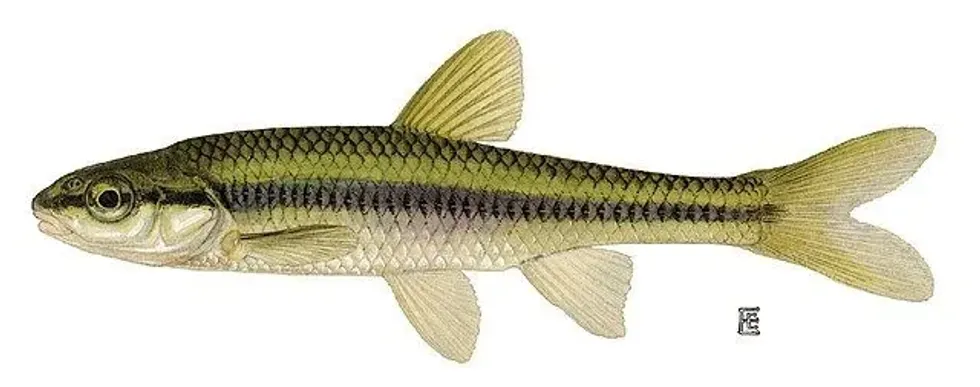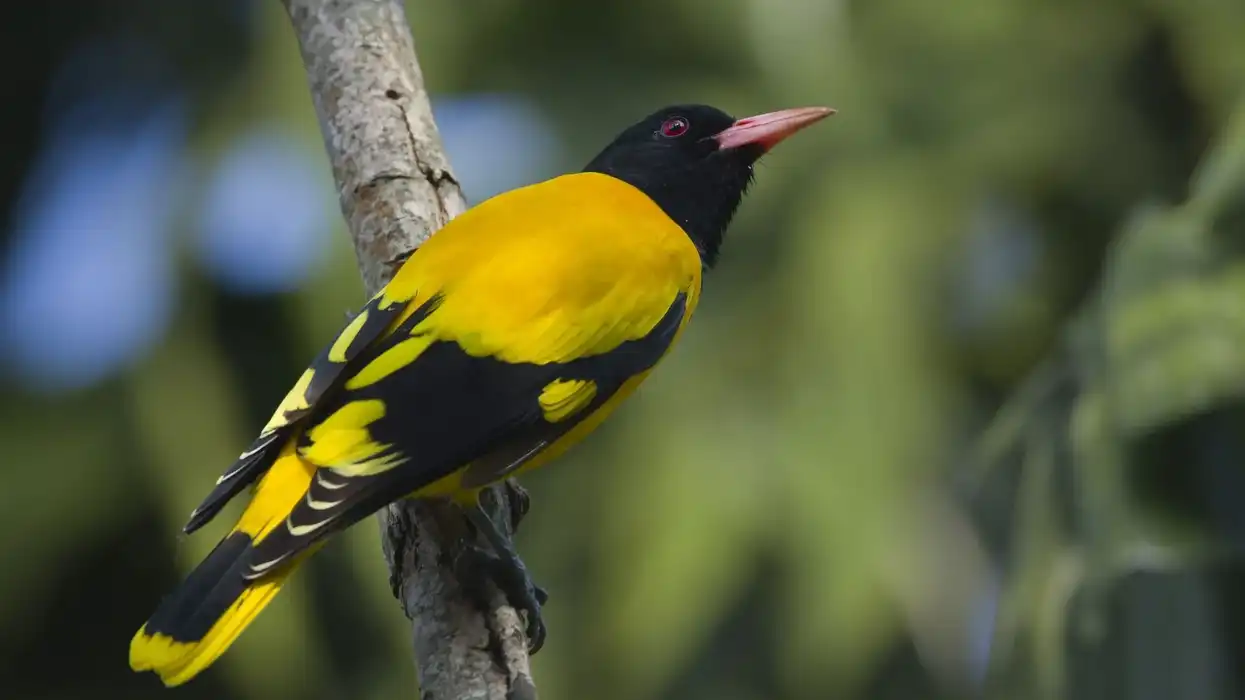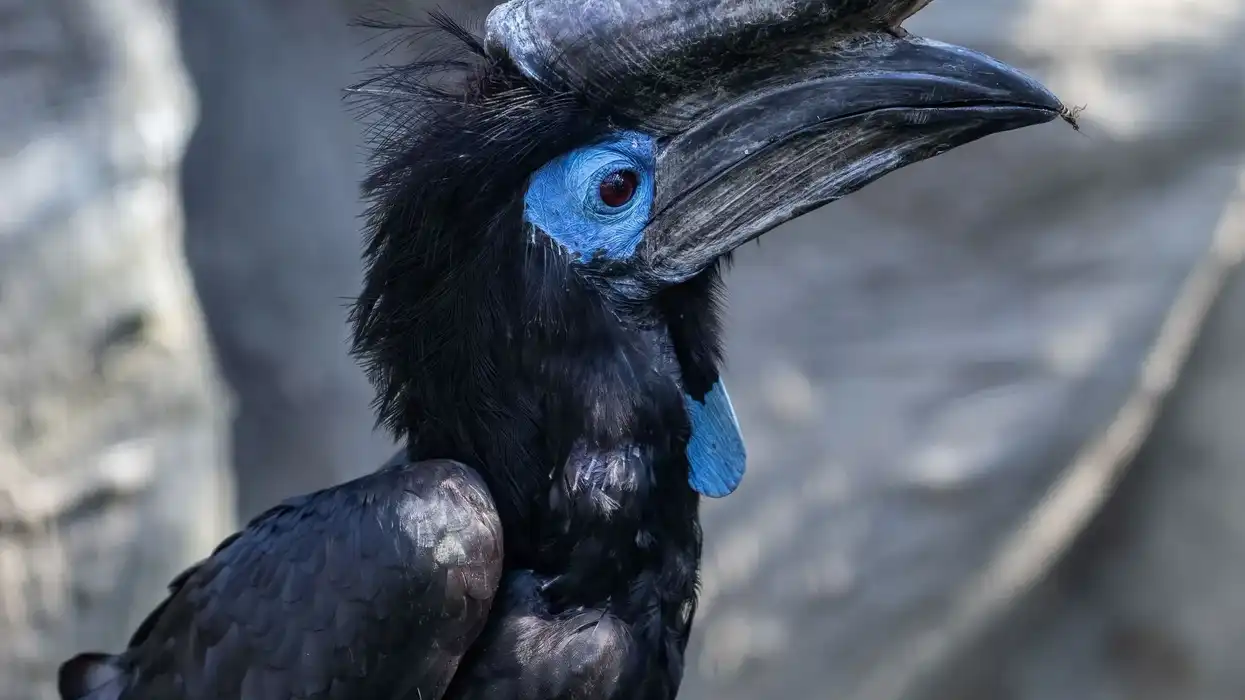The blacknose shiner or Notropis heterolepis (Eigenmann & Eigenmann 1893) is a small-sized species of fish belonging to the carp and minnow family Cyprinidae. It is one out of the 3,000 fish species that fall under the Cyprinidae family, the largest vertebrate family of aquatic animals and one of the largest and most diverse fish families.
The blacknose shiner (Notropis heterolepis) belongs to the class Actinopterygii which includes ray-finned fishes.
The blacknose shiner (Notropis heterolepis) stands out due to a distinct black pigment on the tip of its snout.
The pigment extends as a prominent black stripe cutting through the eyes and gills, across the middle of the body, and up to the base of the tail. The scales on the lower surface of the body are mostly silvery, while those on the back and upper surface are gray-green or olive-yellow.
Being a member of the group of ray-finned fishes, this minnow species has eight dorsal, pelvic, and anal fin rays.
They primarily inhabit fresh and clear aquatic environments such as lakes, small rivers, and streams with a sand substrate and modest aquatic vegetation. The species is found in North America, with a natural range including the Atlantic, Hudson Bay, the Great Lakes, and the Mississippi river basin.
The northern part of their natural range extends up to Canada, and in the south, they are found in Ohio, Missouri, Illinois, and Kansas in the United States of America.
Do you find the blacknose shiner (Notropis heterolepis) interesting? Then read on to know more about them!
For more relatable content, check out these giant oarfish facts and monkfish facts for kids.
Blacknose Shiner Interesting Facts
What type of animal is a blacknose shiner?
Blacknose shiner (Notropis heterolepis) is a minnow fish species belonging to the family Cyprinidae.
What class of animal does a blacknose shiner belong to?
The blacknose shiner (Notropis heterolepis) belongs to class Actinopterygii which includes all species of ray-finned fishes.
How many blacknose shiners are there in the world?
The exact population size of the blacknose shiner (Notropis heterolepis) is not available.
Where does a blacknose shiner live?
The blacknose shiner (Notropis heterolepis) primarily inhabits fresh streams and clear waters. They are common in small rivers, lakes, ponds, creeks, and slow-moving streams with a sand substrate and moderate aquatic vegetation.
What is a blacknose shiner's habitat?
The natural distribution and habitat of the blacknose shiner (Notropis heterolepis) are limited to streams and rivers of North America. They have a broad distribution range in the Hudson Bay drainage, which includes Nova Scotia and southern Canada.
In the south, the blacknose shiner is common in the waters of Ohio, Missouri, Illinois, Kansas, and Nebraska in the United States of America. Natural populations of the species are more common in the northern parts of their range but are disappearing in the south.
Who do blacknose shiners live with?
The blacknose shiners can be found in groups called schools.
How long does a blacknose shiner live?
The maximum reported age of the blacknose shiner (Notropis heterolepis) is one year. They live far fewer years than white cloud mountain minnows.
How do they reproduce?
Not much is known about the reproductive biology of the blacknose shiner (Notropis heterolepis). The only information available is that this minnow species begin spawning from June and continue up to July or August. The female fishes lay about 1,500 eggs and deposit them on the sand substrate or scatter them over aquatic vegetation.
What is their conservation status?
According to the International Union for Conservation of Nature (IUCN) Red List of Threatened Species, the blacknose shiner (Notropis heterolepis) is a minnow species of Least Concern.
Blacknose Shiner Fun Facts
What do blacknose shiners look like?
The blacknose shiner (Notropis heterolepis) is a small-sized fish with pale or silvery scales on the underside and olive-yellow or gray-green scales on the back and upper parts of the streamlined body. The mouth is slightly sub-terminal (mouth ends below the tip of the snout) and without a barbel.
All fins are transparent. There are typically eight and sometimes seven anal fin rays. The dorsal and pelvic fins, too, have eight rays.
The pectoral fin typically consists of 12-14 rays, and the caudal fin contains more, up to 19 rays. The body is covered with cycloid scales, but the head is devoid of any scales.
A black lateral stripe is present along the middle on each side of the body; this black band runs from the tip of the black snout and stretches up to the base of the tail fin. The black lateral stripe does not extend onto the chin and is adorned with tiny, dark patches.
In addition, the scales on the back and on the upper side have distinct dark outlines that give a cross-hatched look to the fish.
In sharp contrast with the back and the upper body, a narrow stretch of golden-colored scales above the black lateral stripe lack the dark edges.
The lateral line has 33-37 scales, but all scales on the lateral line do not have pores. The jaw is toothless, but a set of pharyngeal teeth is arranged in two rows.
 *Please note that this is a picture of Ozark minnow. If you have an image of a blacknose shiner, let us know at hello@kidadl.com.
*Please note that this is a picture of Ozark minnow. If you have an image of a blacknose shiner, let us know at hello@kidadl.com.
How cute are they?
The sheer small size of the blacknose shiner makes it a cute and adorable creature. Besides, the silvery and yellowish scales and the black stripe running across the middle of the body adds a touch of beauty to the overall look of the blacknose shiner.
How do they communicate?
No specific information is available regarding how the blacknose shiner communicates. However, it is known that minnows have modified bones (called Weberian ossicles) in their vertebral column that moves in response to the stimulus of sound. The resulting movements of the swim bladder improve hearing sensitivity underwater.
How big is a blacknose shiner?
Blacknose shiner typically measures about 2.9 in (7.4 cm), with the maximum length going up to 3.85 in (9.8 cm). It is of a similar size as that of a closely related species, the blackchin shiner (Notropis heterolepis). However, the teira batfish and the hogfish are much bigger in size than them.
How fast can a blacknose shiner swim?
No information is available regarding the exact swimming speed of the blacknose shiner.
How much does a blacknose shiner weigh?
No information is available regarding the weight of the blacknose shiner. Yet, we can assure you that it weighs far less than the 30 lb (13 kg) of the ladyfish.
What are the male and female names of the species?
Male and female blacknose shiners do not have special names.
What would you call a baby blacknose shiner?
Blacknose shiner babies would be called fries or fingerlings.
What do they eat?
The blacknose shiner is typically a bottom-feeder and feeds on insects, crustaceans, and other small aquatic invertebrates found around water vegetation.
Are they dangerous?
The blacknose shiner is totally harmless.
Would they make a good pet?
Given their little size and non-aggressive nature, the blacknose shiner should make a good pet.
Did you know...
Even though the blacknose shiner is closely related to the blackchin shiner, it differs from the latter in possessing a smaller mouth and has no pigment on the lower jaw.
Like the related Blackchin Shiner, the lateral line of the blacknose shiner is incomplete; both species differ from their close relative, the Bigeye Shiner, which has a complete lateral line.
The breeding male blacknose shiner has bumps (called tubercles) on the head and pectoral fins.
Even though the IUCN does not categorically put the blacknose shiner under the list of Endangered species, its populations are threatened by increased siltation and turbidity of rivers and streams caused due to runoff and erosion. Since the species requires clear waters, the deteriorating water quality across its habitat has led to the large-scale disappearance of its members.
The blacknose shiner features in the threatened species list in Iowa and has endangered status in the Iowa Wildlife Action Plan.
How did blacknose shiners get their name?
As already evident, the term blacknose seems to have come from the black-colored snout of the blacknose shiner. The term shiner is commonly used in North America to refer to any small, silvery fish, particularly the cyprinids.
How do blacknose shiners protect themselves?
As a natural defense mechanism, minnows, in general, are known to release a substance into the water, particularly when they are dead or injured. The substance released from the fish's skin cells helps to alert other fishes around about lurking danger.
The death or injury to a fish alerts the surrounding fishes, who then act accordingly to protect themselves. Besides, the vegetation in the surrounding water provides an effective hideout for the blacknose shiners to escape predators.
Here at Kidadl, we have carefully created lots of interesting family-friendly animal facts for everyone to discover! For more relatable content, check out these koi facts and spotted sunfish facts pages.
You can even occupy yourself at home by coloring in one of our free printable blacknose shiner coloring pages.
*Please note, this is an image of a bleeding shiner. If you have an image of a blacknose shiner, let us know at hello@kidadl.com.




 *Please note that this is a picture of Ozark minnow. If you have an image of a blacknose shiner, let us know at hello@kidadl.com.
*Please note that this is a picture of Ozark minnow. If you have an image of a blacknose shiner, let us know at hello@kidadl.com.



